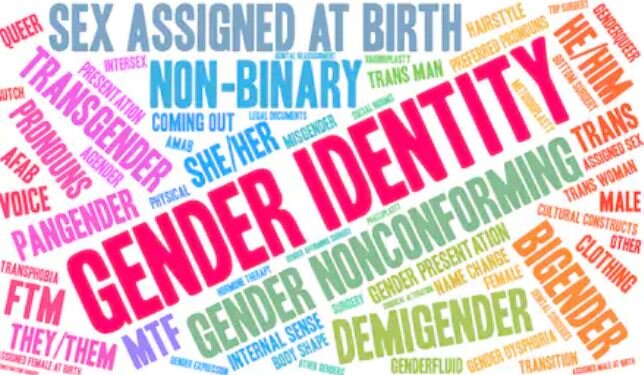Identity 100
graphic courtesy of freepik.com
We’ve all been there. It’s syllabus week and your professor has asked you to go around the room and say your name, a fun-fact… oh, and your pronouns! There are a few ways people tend to respond to that last identifier. Some deftly list the pronouns they have actively chosen, some hesitate because they aren’t completely secure in their identity, and finally, we have the special few that snicker and mumble what they believe to be obvious because they have no clue what the term ‘gender pronouns’ even means. It’s easy to brush this final group off as politically incorrect or ignorant for not having an awareness of the gender spectrum, but it is much harder to face the reality that many have not been lucky enough to become socially fluent in the ins and outs of gender identity. So, the question arises: whose responsibility is it to educate these students and help lift the curtain? The integration of even one identity and diversity workshop during SU orientation could at least provide the foundational language to allow such people to form questions about the aspects of gender identity that they do not understand.
As we’re sure everyone has realized by now, SU students come from all kinds of political and social backgrounds. For a lucky few, gender identity was something talked about at the dinner table, taught in school, and understood between friends. For these folks, a world where gender identity is not a common point of discussion seems far-fetched. Therefore, when someone that is less gender-savvy laughs off the question of pronouns, those with more experience on the subject are quick to assume that the individual had a choice in the matter of what they were simply never taught to be sensitive to. And, sure, after a certain point in this age of information, people have to take responsibility for their own ignorance. However, for some, college may be their first chance to explore not only identity as a whole, but their own identity beyond the constraints of pressures they face at home. For a community based upon the education and cultivation of minds, we’re a little too quick to assign blame to people who simply may not have ever been given the opportunity to know any better.
For all the time that the university delegates to discussing books and holding fairs during students’ first semester on campus, at least one of those many hours could be set aside for a lecture, seminar, workshop, or even a discussion group on the topic of identities that we are all assumed to know about (but actually don’t)! However, while we wait for the next round of orientation to start up in 2020, we might as well give you something to do! Try to have an open mind about where people are coming from, and assume good intentions until proven otherwise.
Do some research and be ready to explain (in a totally non-condescending, respectful way) why the choice to express the gender a person identifies with is so important. And, on that note, don’t assume yourself to be the all-knowing guide to the gender spectrum. Be willing to learn from the people to whom you may be trying to preach.
For some, simply becoming aware of the uses of “they/them,” “ze/zir,” etc., might only give them more vocabulary to add to their anti-pride posters. But, for many, a course or discussion group on the topic of gender identity might crack open doors for students to view the identities of their classmates in a new light, or, perhaps, even their own. Ultimately, the degree to which a person accepts a person’s right to choose their gender identity is up to them. The least we can do is help them make an informed decision.

